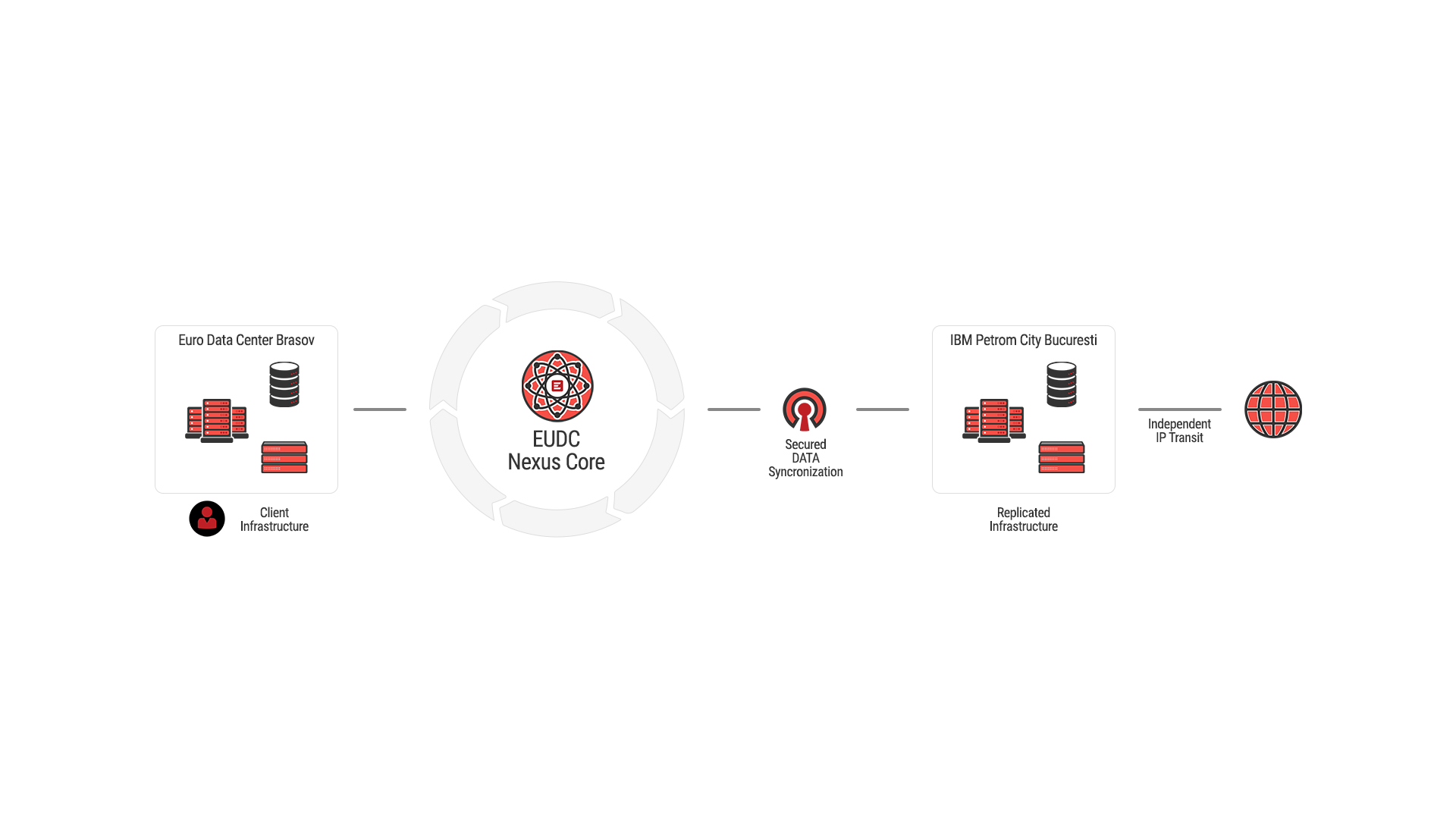In the last two years, approximately 80% of companies experienced an incident that required the use of a disaster recovery plan. Organizations must protect, plan and prepare for any disruption.
EUDC DRaaS is a backup and fast recovery service for data and critical systems after a disaster. Using cloud computing resources, the EUDC Disaster Recovery service is less expensive, more flexible and more easily scalable than using IT infrastructures in a secondary location.
- Availability - Expand the existing infrastructure in the Cloud
- Low costs - No initial hardware costs
- Scalability - The solution can be modified according to your needs.
- Easy testing - Automated solution management
- Continuity - Guarantee of availability of data and critical systems
What is Disaster Recovery?
The right plan
- Complete Critical Hardware Environments
- IT hardware, including network infrastructure, physical or virtual servers, desktop or laptop computers, wireless devices and peripherals
- Service provider connectivity
- Enterprise software applications
- Data storage devices or applications
Disaster Recovery in Data Center
Synchronous replication
The most secure but resource-intensive method of replication. In a synchronous replication scenario, the receiving system acknowledges each change received from the sending system. Adopting this method requires maintaining a "hot" backup site and is the most efficient.
Semi-synchronous replication
The receiving system sends the confirmation only after a number of changes have been received. This synchronization method is parallel to the "hot" approach and may be the right choice for services that, in the event of a disaster, may allow data loss and a period of inactivity.
Asynchronous replication
Data replication of this method is faster, but less secure, because the sending system simply continues to send data without receiving any response. This method is best suited for static resources or scenarios where data loss is acceptable.
When creating a Disaster Recovery Plan, organizations must ensure that their recovery policy is complementary to the chosen synchronization method.
For example, the “hot” synchronization / recovery policy ensures that data is always 100% synchronized and that a parallel system is always ready to take over the production system with minimal latency or downtime. However, if a data center has chosen asynchronous replication, it is possible that the expenses for maintaining a “hot” server are not justified, because it may happen that the data is not completely replicated at a certain point of failure.
EUDC offers consulting services for choosing the optimal solution.
